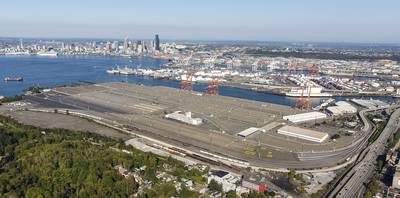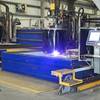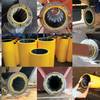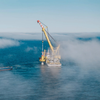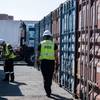Seattle’s Terminal 5 Closer to Becoming ‘Big Ship Ready’
The Port of Seattle has completed the environmental analysis of Terminal 5 and has prepared the Final Environmental Impact Statement (FEIS) on the project to modernize the cargo-handling facility in order to serve larger cargo vessels. The proposed upgrades to Terminal 5 are wharf rehabilitation, berth deepening, electrical service and improvements to the upland portions of the property.
“Based on public comment we are including a number of improvements, such as shore power for vessels, installing gates for noise and safety mitigation for rail, and significant traffic improvement measures,” said John Creighton, Port of Seattle Commission president and co-chair of The Northwest Seaport Alliance. “We want to thank the public for weighing in on this proposal during the comment period.”
“With this Final Environmental Impact Statement for Terminal 5, we are one step closer to making this prime maritime asset ‘Big Ship Ready’ and able to handle the largest container vessels working the market today,” said Connie Bacon, Port of Tacoma Commission president and co-chair of The Northwest Seaport Alliance. “This region needs this terminal to remain competitive in today’s global economy.”
Mitigation measures for the project include construction of plug-in capability for shore power at two berths, tracking of air quality performance, establishment of a safety corridor between the Terminal 5 gate and the Duwamish river in order to minimize the need to use locomotive horns, required use of ambient-sensing broadband back up alarms, implementation of a Gate Queue Management plan, establishing a truck driver information system, comprehensive traffic signal improvements along SW Spokane Street and an operation noise management plan to ensure and monitor compliance with the Seattle noise code.
The FEIS evaluated potential impacts to earth, air, water, plants, animals, energy and natural resources, environmental health, noise, aesthetics (including light and glare), historic and cultural resources, transportation and public services. The Port of Seattle Commission must approve the recommended improvements in public session.



